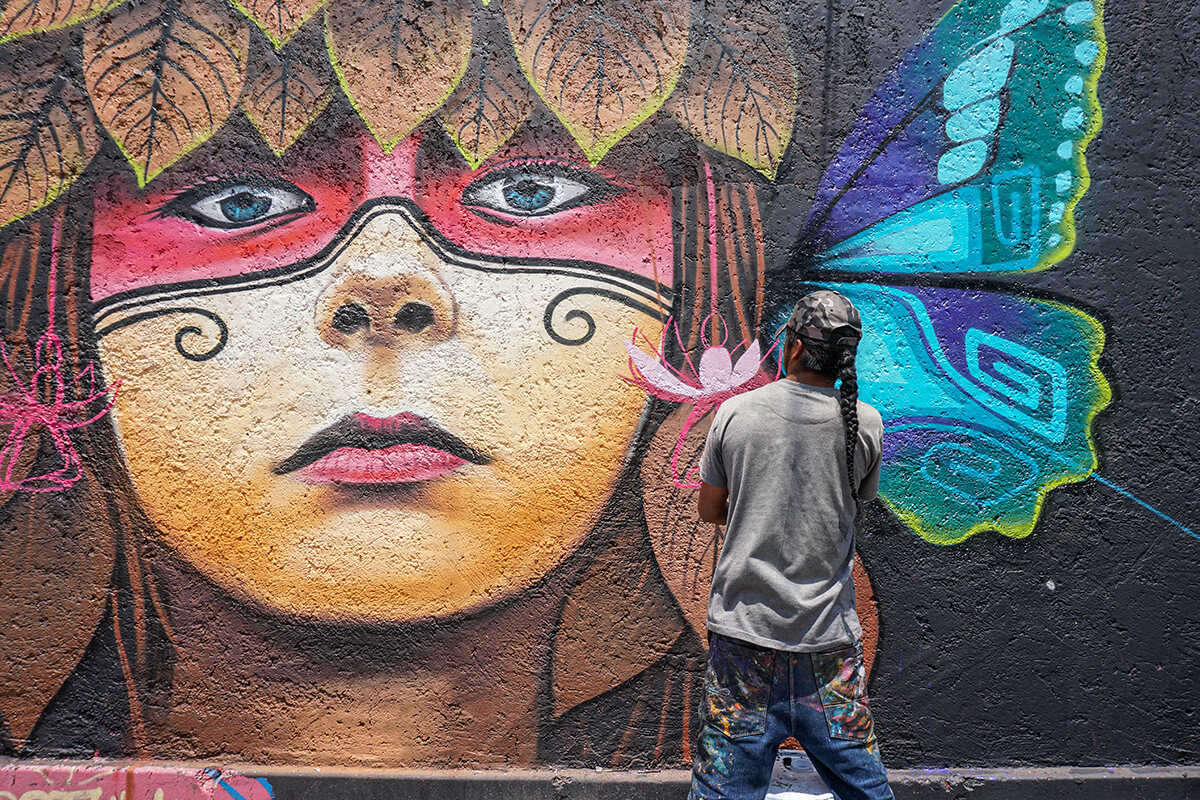
Urban art is more than just graffiti on walls; it's a vibrant expression of culture, politics, and creativity. Ever wondered how this art form evolved or what makes it so captivating? Urban art encompasses a wide range of styles and mediums, from murals to street installations. It's often created in public spaces, making it accessible to everyone. This art form can transform dull cityscapes into colorful canvases, sparking conversations and inspiring communities. Whether you're an art enthusiast or just curious, these 25 facts about urban art will give you a deeper appreciation for this dynamic and ever-changing form of expression.
Key Takeaways:
- Urban art, also known as street art, began in the 1960s in New York City with graffiti on subway cars. It has evolved into a diverse art form with techniques like stenciling and styles like murals.
- Famous urban art locations like Berlin's East Side Gallery and London's Shoreditch neighborhood showcase vibrant street art scenes, impacting society by bringing attention to social issues and revitalizing urban areas.
The Origins of Urban Art
Urban art, often synonymous with street art, has a rich history that spans decades. It has evolved from simple graffiti to complex murals and installations. Here are some fascinating facts about its origins and development.
-
Urban art began in the 1960s in New York City, primarily as graffiti on subway cars and buildings.
-
The term "graffiti" comes from the Italian word "graffiato," meaning scratched.
-
Early graffiti artists, known as "writers," used tags to mark their territory.
-
The 1970s saw the rise of graffiti crews, groups of artists who collaborated on large-scale pieces.
-
Keith Haring and Jean-Michel Basquiat were among the first street artists to gain recognition in the mainstream art world.
Techniques and Styles
Urban art encompasses a variety of techniques and styles, each with its own unique characteristics. From stencils to murals, these methods have shaped the way we perceive street art today.
-
Stenciling involves cutting out shapes from paper or cardboard and spraying paint over them.
-
Murals are large-scale paintings that often cover entire walls or buildings.
-
Wheatpaste is a technique where artists use a mixture of flour and water to paste posters or drawings onto surfaces.
-
Yarn bombing, also known as knit graffiti, involves covering objects in public spaces with knitted or crocheted yarn.
-
Sticker art, or "slaps," involves placing stickers with artistic designs in public places.
Famous Urban Art Locations
Certain cities around the world are renowned for their vibrant urban art scenes. These locations have become cultural hubs for street artists and art enthusiasts alike.
-
Berlin's East Side Gallery is the longest open-air gallery in the world, featuring murals on a remaining section of the Berlin Wall.
-
London’s Shoreditch neighborhood is famous for its ever-changing street art, including works by Banksy.
-
Wynwood Walls in Miami showcases large-scale murals by some of the world’s most famous street artists.
-
Melbourne's Hosier Lane is a popular spot for both local and international street artists.
-
São Paulo, Brazil, is known for its massive murals and vibrant street art culture.
Impact on Society
Urban art has a significant impact on society, influencing everything from politics to community identity. It often serves as a voice for the voiceless and a platform for social commentary.
-
Street art can bring attention to social and political issues, such as racial inequality and climate change.
-
Murals and graffiti can revitalize neglected urban areas, attracting tourists and boosting local economies.
-
Community art projects often involve local residents, fostering a sense of pride and ownership.
-
Urban art can challenge traditional notions of what constitutes "real" art, breaking down barriers between high and low culture.
-
Some cities have embraced street art as part of their cultural heritage, offering legal spaces for artists to work.
Controversies and Legal Issues
Despite its popularity, urban art is not without controversy. Legal issues and debates about its legitimacy continue to spark discussions.
-
Many street artists operate in a legal gray area, as graffiti is often considered vandalism.
-
Some cities have strict anti-graffiti laws, leading to fines and jail time for artists.
-
The debate over whether street art should be preserved or removed is ongoing, with some arguing it should be protected as cultural heritage.
-
Banksy, one of the most famous street artists, often creates works that are quickly removed or defaced, sparking debates about the value and permanence of street art.
-
Despite legal challenges, urban art continues to thrive, with many artists finding ways to work within the law or using their art to challenge it.
Urban Art's Impact
Urban art isn't just graffiti on walls. It's a powerful form of expression that reflects culture, politics, and social issues. From murals to street installations, urban art transforms cities into vibrant galleries. It gives a voice to the voiceless and brings communities together. Artists like Banksy and Shepard Fairey have shown how urban art can challenge norms and provoke thought. This art form also boosts local economies by attracting tourists and art enthusiasts. As cities evolve, urban art will continue to play a crucial role in shaping their identity. So next time you see a piece of urban art, take a moment to appreciate its message and the artist behind it. Urban art isn't just about aesthetics; it's about storytelling and connection.
Frequently Asked Questions
Was this page helpful?
Our commitment to delivering trustworthy and engaging content is at the heart of what we do. Each fact on our site is contributed by real users like you, bringing a wealth of diverse insights and information. To ensure the highest standards of accuracy and reliability, our dedicated editors meticulously review each submission. This process guarantees that the facts we share are not only fascinating but also credible. Trust in our commitment to quality and authenticity as you explore and learn with us.
